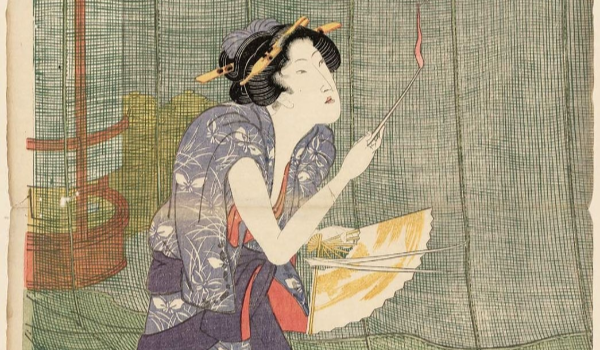
Protective Fibres

Ukiyo-e, pictures of the floating world, is a genre of woodblock prints and paintings that flourished in Japan. It was aimed at the prosperous merchant class in the urbanising Edo period (1603–1867). Amongst the popular themes were depictions of beautiful women; kabuki actors and sumo wrestlers; scenes from history and folk tales; travel scenes and landscapes; flora and fauna; and erotica.
The colours of hemp kaya varied from beige, green, indigo, brown and some had small stripes running the length of the fabric panel. All hemp fabric colours fade over time into charming variegated muted tones. Only natural organic dyes were used to colour the kaya.

Extract from a blog post by Kimonoboy.

2 comments
I expect it’s an incense stick, the smell would repel insects. Much as the people of Oman light incense at dusk.
I wonder what the ladyin the top picture is doing with the taper?